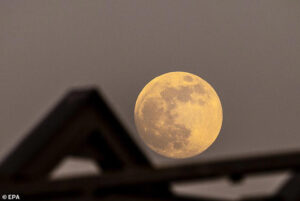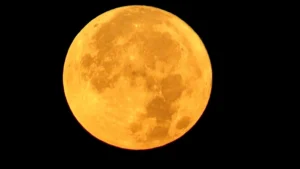Get ready for a stunning celestial event! The Full Flower Moon is set to light up the night sky this week, enchanting viewers with its beauty for three days. This astronomical phenomenon is named after the blooming of flowers in May, also known as the “flower moon.” But that’s not all – it’s also called the “Mother’s Moon,” “Milk Moon,” or “Corn Planting Moon.”

Native Americans considered the Flower Moon to be a significant signal to start planting crops. They had a deep understanding of the moon’s phases and how they correlated with the cycles of nature. According to The Old Farmer’s Almanac, you can expect the moonrise around 8:35 pm ET on Thursday, followed by the moon crossing the meridian at 1:14 am and setting at 5:46 am on Friday.

If you are a sky enthusiast, you will be able to catch a glimpse of the Flower Moon on Wednesday, just before sunset, by looking towards the east. However, the main event will be on Thursday when the moon appears beside a magnificent star called Antares. Antares, located in the constellation Scorpius, is known for its beautiful ruby color and is close to the end of its life. Scientists predict it will explode in a supernova. In 2017, researchers used the European Southern Observatory’s Very Large Telescope (VLTI) to capture detailed images of this fascinating star. These images revealed surprising new insights, showing turbulent and low-density gas further away from the star than expected. This unexpected movement challenges our current understanding of how energy transfers in the outer atmospheres of stars like Antares. Scientists are now exploring new processes to explain these fascinating phenomena.
So, don’t forget to mark your calendars and prepare yourself for a breathtaking display of the Full Flower Moon, accompanied by the celestial beauty of Antares. You won’t want to miss this remarkable show in the night sky!
